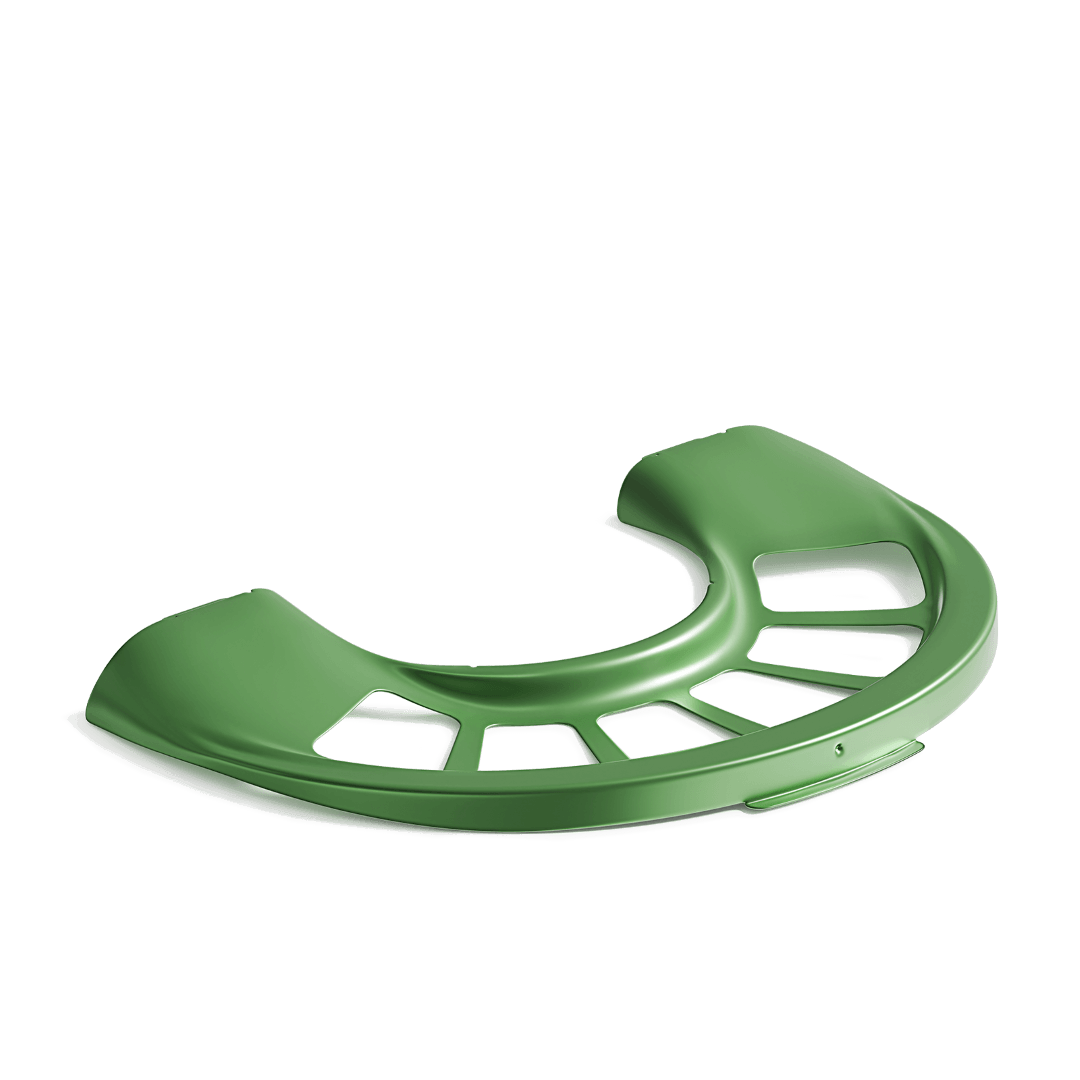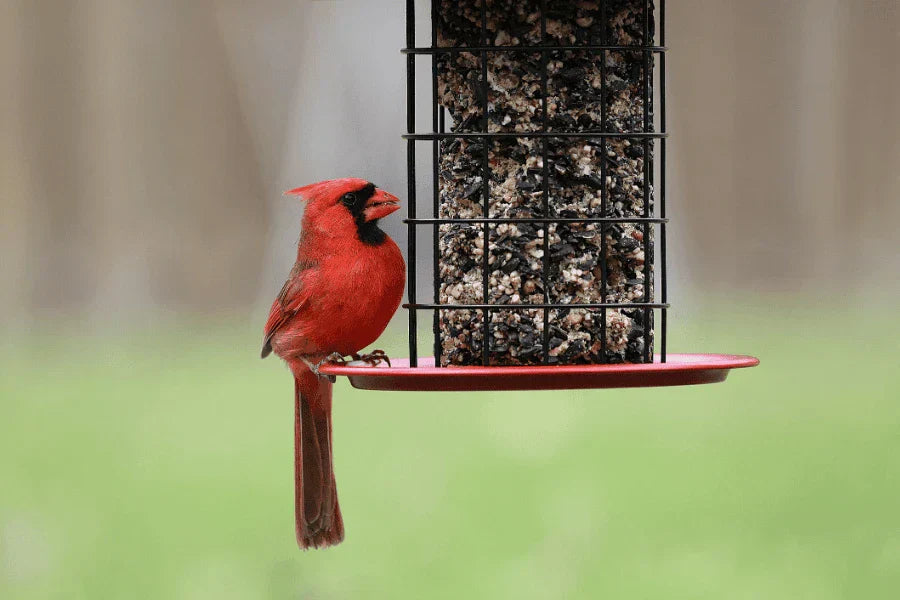American Goldfinch Vs Lesser Goldfinch: A Complete Comparison Of Two Stunning Finches
With their vivid plumage and upbeat songs, two endearing finch species that adorn North American landscapes are the American Goldfinch and the Lesser Goldfinch. The behavior, habitat, and physical traits of these finches differ significantly, even though they have similar names and stunning appearances.
This article will compare and contrast the American and Lesser goldfinches in great detail, highlighting their distinctive characteristics, favored habitats, and essential distinguishing characteristics. It will also make it easy for you to tell apart these two gorgeous finches, whether you're a keen observer of birds or just interested in learning more about them.
Introduction
Brief Introduction To The American Goldfinch And Lesser Goldfinch
The American Goldfinch (Spinus tristis) and the Lesser Goldfinch (Spinus psaltria) are two species of birds that are conveniently similar in appearance and are found in most regions of North America.
These two small songbirds, of which yellow feathers of the one are well known, are stressed by their similarities in size, food habits, and habitats. Bird watchers, both beginner and experienced, frequently encounter challenges distinguishing between those two species, mainly when male birds aren't of their vibrant breeding plumage.
Importance Of Accurate Identification For Bird Watchers
Identifying those species is crucial for chicken watchers, ornithologists, and casual enthusiasts alike. Accurate identification contributes to a greater understanding of regional fowl populations, behavior research, and ecological roles.
Also, many bird lovers like to challenge themselves to distinguish one species from another, even if they look more or less alike. Therefore, it becomes a fun exercise and an academic achievement.
Below in this article, you will get to know about the comparison of the American Goldfinch and the Lesser Goldfinch. By understanding those subtle differences, you can improve your identity competencies and appreciation for these unique songbirds.
Section 1: Overview Of The American Goldfinch And Lesser Goldfinch
A summary of the overall traits, appearance, and similarities between these goldfinches is given in this section. So, keep reading!
American Goldfinch (Spinus Tristis)

- Description and General Appearance
The American Goldfinch is a small finch species, about 4 inches in length, in the family of Fringillidae, with 3 to 5. 1 inch of incubation. The plumage color of males is bright lemon-yellow while on the breeding grounds, especially in winter, and the wings are black and the undertail white.
Females, on the other hand, are paler, with olive-brown or yellowish tones. Both sexes adopt a muted brownish-yellow coloration during non-breeding months, enabling them to combo with their surroundings as they molt into their winter plumage.
- Geographic Range and Habitat
The American Goldfinch is sizeable throughout North America, inhabiting open fields, meadows, suburban gardens, and woodland edges. This species is found from southern Canada to northern Mexico, with populations migrating southward at some point in the chillier months. They are usually associated with areas rich in small-seeded flowers like thistles and sunflowers, their primary food source.
Lesser Goldfinch (Spinus Psaltria)

- Description and General Appearance
The Lesser Goldfinch is barely smaller than its American counterpart and ranges from 3.5 to 4.7 inches. Males are usually characterized by their yellow underparts and black or darkish greenbacks, with a black cap on their heads. Females and juveniles are extra uniformly olive-grey or stupid yellow. Unlike the American Goldfinch, the Lesser finch maintains a comparable plumage year-round, making its identity more consistent.
- Geographic Range and Habitat
The Lesser Goldfinch is generally found in the western, central, and southern regions of the United States. Its range stretches from the Pacific Coast to Texas and extends into Mexico and South America. Lesser Goldfinches prefer living in open woodlands, scrublands, and urban areas, regularly touring outside feeders looking for tiny seeds like Nyjer.
Section 2: Male Goldfinch Identification
This section covers male goldfinch identification, emphasizing their distinctive traits. The male American Goldfinch is renowned for its vibrant yellow body, black wings, and black cap, creating a striking contrast. Conversely, the male Lesser Goldfinch typically exhibits a more muted yellow or olive-yellow hue with a dark green or black cap. These visual differences are key for birdwatchers to accurately distinguish between these two charming finches in the wildlife.
Bill Characteristics
- American Goldfinch: Its bill is robust and conical, more significant than the Lesser finch's. During the breeding season, the invoice turns a vibrant pinkish-orange, contrasting with the chook’s vivid yellow plumage. In the non-breeding season, it can range from brownish to blackish coloration.
- Lesser Goldfinch: In evaluation, the Lesser finch has a smaller, extra delicate, and barely curved bill. Its shade ranges from grey to dark grey or blackish, missing the seasonal brightness seen in the American Goldfinch.
Hind Crown
- American Goldfinch: Its hind crown is usually yellow or brownish, depending on the season. Importantly, it never turns black, even at some stage in the breeding season.
- Lesser Goldfinch: Its hind crown is usually black or blackish, even though a few people may also have a greenish-black hue. This function is handy for distinguishing adult males from the American finch.
Nape
- American Goldfinch: The nape, just like the hind crown, remains yellow or brownish for the year. It is not well-known to show the darker sunglasses inside the Lesser Goldfinch.
- Lesser Goldfinch: Its nape is generally black or greenish, imparting some other clear distinction between the two species.
Back
- American Goldfinch: The lower back is predominantly yellow throughout the breeding season and turns brown during winter.
- Lesser Goldfinch: Again, the Lesser finch is generally black, blackish, or dark green, depending on the place and individual version.
Wing Bars
- American Goldfinch: It displays two robust, prominent white wing bars that stand out against its black wings, making this a distinctive area mark.
- Lesser Goldfinch: They commonly show one sturdy wing bar that is less prominent than the American Goldfinch.
Undertail
- American Goldfinch: It has a white undertail that is mainly substantive throughout flight and contrasts with the darker top wings and back.
- Lesser Goldfinch: Its undertail is yellow, mixing more seamlessly with its frame color.
Section 3: Female Goldfinch Identification
The differentiation of female goldfinches is examined in this section, with particular attention to their minute variations. Female American Goldfinches have less prominent markings and a softer yellow-brown or olive coloration.
Female Lesser Goldfinches, on the other hand, have a darker crown and a more muted olive or yellowish-green coloration, frequently giving the impression of improved uniformity. Accurately recognizing these species in different habitats depends on these characteristics.
Bill Characteristics
- American Goldfinch: Female finches have longer and stronger bills that seem straighter than lesser goldfinches. The bill changes color depending on the season; it is pinkish during breeding and could be pinkish, brown, or even blackish at other times.
- Lesser Goldfinch: Its bill is slightly smaller and slightly curved. Its coloration degrees from light grey to dark grey or blackish, and it does now not display the seasonal color change visible inside the American Goldfinch.
Hind Crown
- American Goldfinch: Its hind crown is a muted yellow or brownish color that stays constant across the seasons. Notably, it by no means turns green.
- Lesser Goldfinch: Its hind crown is generally yellowish to greenish, helping to distinguish it from the American species.
Nape
- American Goldfinch: The female shows a dull to vibrant yellow nape throughout the breeding season, which turns brownish-grey during the non-breeding season.
- Lesser Goldfinch: The female's nape is consistently inexperienced and less shiny than the American Goldfinch.
Back
- American Goldfinch: At some point during the breeding season, its lower back turns stupid yellow or brown to bright yellow.
- Lesser Goldfinch: In evaluation, the female finch has a lower back that is predominantly green or dull yellowish.
Wing Bars
- American Goldfinch: They have one to 2 prominent wing bars.
- Lesser Goldfinch: They usually have one, less prominent than inside the American species.
Undertail
- American Goldfinch: Its undertail is white.
- Lesser Goldfinch: It has a yellow undertail, blending with its body.
Section 4: Behavioral And Habitat Differences
This section outlines the behavioral and environmental distinctions between these goldfinch spices. Thistle-rich environments and open fields are preferred by American Goldfinches, who have an unusual acrobatic feeding habit on plants and feeders.
Lesser Goldfinches, on the other hand, have a more restrained eating habit and are frequently found in more forested or shrubby areas. Recognizing and appreciating their distinct ecological roles is made easier by having an understanding of these behavioral features and habitat preferences.
Habitat Preferences
- American Goldfinch: It thrives in several environments across the North American region. It has been identified as living in open fields, gardens, and areas that contain large quantities of tiny seeds, such as thistles and dandelions.
- Lesser Goldfinch: They are extra constrained to the western states and the Desert Southwest. They choose semi-arid regions, scrublands, and suburban areas with feeders, particularly those presenting Nyjer or tiny sunflower seeds.
Feeding Habits

-
American Goldfinch: Eating habits of American Goldfinches include being mainly granivores, and their diet primarily consists of seeds from native as well as non-native thistles, dandelions, and small-seeded plants. They are usually placed with the fruit end downward to reach seeds in areas that may be inexplicable.

- Lesser Goldfinch: Their weight loss plan is over 98% plant, with a desire for local thistles and small asters. They frequent visitors to feeders, eating tiny seeds like Nyjer.
Breeding And Nesting
- American Goldfinch: Uniquely, they are overdue breeders, regularly ready until mid-summer when seeds are more abundant. They time their nesting to coincide with the availability of these vital food sources.
- Lesser Goldfinch: These finches additionally breed later than many migratory birds, with some populations extending their breeding season into overdue summer time. They pick nesting in shrubs and small timber near their feeding areas.
Section 5: Range Maps And Distribution
In this section, we will cover the range maps and distribution of these two goldfinches. With a wide distribution in North America, the American Goldfinch is frequently spotted in open spaces. In contrast, the Lesser Goldfinch prefers more specialized habitats and is mostly found in the southern United States and parts of Mexico. Their favored habitats and adaptations to different regions are seen in their distribution patterns.
American Goldfinch Range Map
The American Goldfinch boasts a vast and expansive range, protecting most of North America. This finch species is incredibly adaptable, thriving in habitats from southern Canada to northern parts of Mexico. In the summer season, they may be discovered across the USA and southern Canada, frequently inhabiting areas with plentiful small-seeded plants.

As wintry weather processes, populations inside the northern regions migrate south, sometimes a long way because the southern United States, where temperatures are milder, and food resources continue to be had. Despite this seasonal migration, a few American finches are yr-spherical residents in the principal United States, especially in regions with consistent right of entry to chicken feeders stocked with Nyjer or sunflower seeds. Their vast distribution lets chook watchers in many places come across these colorful yellow birds for much of the year.
Lesser Goldfinch Range Map
In contrast to the American one, the Lesser Goldfinch occupies an extra limited variety, mainly constrained to the Western states of the USA. These birds are generally found from California eastward to Texas, extending into northern Mexico and Central America. They are ample inside the Desert Southwest and semi-arid areas, favoring habitats with open woodlands, scrublands, and urban regions with sufficient feeders.

Some populations are everlasting residents in California and the southwestern states, while others migrate to decreased elevations during iciness months. Lesser Goldfinch’s range is more fragmented than American Goldfinch, making it much less likely to be observed throughout the continent. Nevertheless, their presence inside the western U.S. Offers fowl watchers in that vicinity frequent opportunities to experience their fabulous looks and conduct.
Section 6: Tips For Attracting Goldfinches
You will get some suggestions for luring goldfinches into your yard in this section. For a feeder that attracts both American and Lesser Goldfinches, use Nyjer seed. Plant sunflowers and native thistles to provide a natural food supply. Your chances of drawing these colorful birds will also be increased by providing fresh water and keeping the feeding place clean.
Feeding Preferences
Goldfinches are granivorous, meaning their diet consists primarily of seeds from local flora like thistles, sunflowers, and asters. This feeding habit makes them familiar visitors to outside feeders, where the correct seed form may attract both the American and Lesser Goldfinch. Here are the best recommendations for NYjer feeders and types of seeds to attract both goldfinch species.
- Nyjer Seed Feeders: Nyjer seed is one of the top picks for attracting goldfinches. These tiny, black seeds are rich in oil and nutritious for finches. Specialized Nyjer feeders with small openings are best for allotting this tiny seed without waste. Hanging those feeders will likely attract American and Lesser Goldfinches, as they are attracted to Nyjer's high-power content.
- Sunflower Chips and Hulled Seeds: Besides Nyjer, both species revel in sunflower hearts or chips that are simpler to devour without cracking open shells. These can be offered in mesh or tube feeders designed for small birds.
- Native Plants and Flowers: Remember to plant local seed-bearing flora to create a goldfinch-pleasant environment. Thistles, coneflowers, dandelions, and sunflowers provide natural foraging possibilities for goldfinches and inspire them to visit your backyard yearly. As those plants go to seed, they may attract goldfinches, which feed through putting from the seed heads.
Feeder Placement
Feeder placement is essential for attracting goldfinches and ensuring they feel safe while feeding. Below are some best practices for placing feeders to attract goldfinches and increase observation opportunities.
- High and Safe Locations: Place feeders at least five to six toes off the ground to avoid potential predators like cats. Hanging feeders from tree branches, poles, or hooks guarantees that goldfinches can feed undisturbed.
- Quiet, Open Spaces: Goldfinches opt for calm, open areas with a few close-by covers for safety. Try to place feeders in locations not too close to busy backyard regions but wherein they can get admission to nearby timber or shrubs for refuge.
- Multiple Feeders: Since goldfinches often feed in flocks, consider placing a couple of feeders around your backyard. Spacing the feeders apart helps lessen competition among birds and offers them plenty of space to forage without trouble.
- Clean and Maintain Feeders Regularly: Goldfinches are sensitive to grimy or moldy feeders, so be sure to use feeders regularly to prevent sickness and keep the seeds sparkling. Rinse feeders very well and allow them to dry earlier than refilling.
Section 7: Quiz And Practice Identification
You can put your knowledge of American and Lesser Goldfinches to the test with the quiz in this section. To improve your observational skills, work with the behavioral and visual signals that were discussed in earlier parts. This engaging section helps you solidify your understanding and increase your self-assurance in your ability to recognize these two beautiful finches in the wild.
Male Goldfinch Quiz
Question 1: You see a goldfinch with a vibrant yellow color; its wings are black and have two strong white rackets on the wings, and it has a pinkish-orange beak. What is it, an American or Lesser Goldfinch?
Answer: This bird is an American goldfinch with a brilliant yellow body, two wing bars, and a pinkish–orange bill at some point in the breeding season.
Question 2: You see a small finch with a black back, yellow underparts, and a grey invoice. Is it an American Goldfinch or a Lesser Goldfinch?
Answer: This is a Lesser Goldfinch, as it's black again, and grey invoices are key identifiers.
Question 3: A goldfinch with a yellow nape and brownish lower back is noticed in your backyard. Which species is this possibly to be?
Answer: This is an American Goldfinch, as the yellow nape and brownish are typical for non-breeding American finches.
Female Goldfinch Quiz
Question 1: A female goldfinch with olive-brown upperparts and no black on the top is feeding at your feeder. Is it an American or Lesser Goldfinch?
Answer: This is probably a Female American Goldfinch since the females are olive-brown and do not possess the black cap seen in male Lesser Goldfinches.
Question 2: You be aware of a goldfinch with a stupid yellow body and an unmarried wing bar. Is this much more likely to be an American or a Lesser Goldfinch?
Answer: This is a Lesser Goldfinch because this bird mostly has one wing bar, while the American Goldfinch has two.
Question 3: A small bird with a greyish-green color on its back and light-colored belly feeds from your feeder. Which species is this most likely to be?
Answer: This is probably a Lesser Goldfinch, as the greyish-green back is commonplace among ladies and juveniles of this species.
Conclusion
Goldfinches, each American and Lesser ones, add vibrant colors and strength to landscapes. Despite their similarities, they range in physical development, habitats, and feeding behavior. The American Goldfinch is known for its vibrant seasonal plumage and extensive range, even though the Lesser Goldfinch has a more muted shade and restrained habitat.
Bird watchers can decorate their entertainment and knowledge by learning these differences, which aids identification and feeding techniques. Birding connects us with nature, sharpens our observational abilities, and deepens our appreciation for biodiversity. They recognize these active finches from a window or while trekking, offering a glimpse into the avian international’s splendor.





























